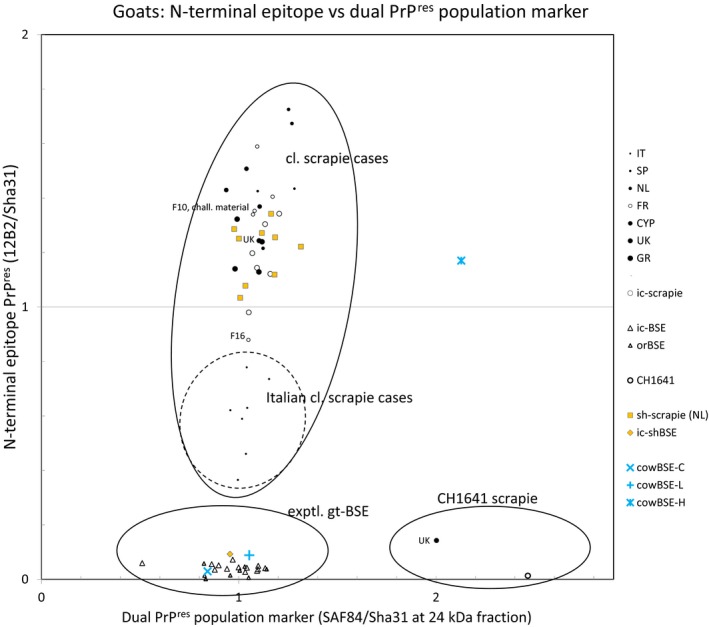Figure 7.

PrPres analysis of scrapie strains by triplex‐Western blotting
On the same blot, three antibodies were applied that have different epitopes on the PrP sequence: 12B2 for N‐terminus, Sha31 for the core sequence, and SAF84 somewhat more C terminal from Sha31 (Biacabe et al., 2007). By calculating ratios between epitope signals, specific properties of PrPR es appear that discriminate between the TSE types classical scrapie, BSE and CH1641. Each dot represents a separate goat TSE isolate. The IT scrapie cases exhibit a reduced N terminus epitope presence intermediate between BSE/CH1641 and the remaining classical scrapie samples (vertical axis). CH1641 can be distinguished from BSE due to the presence of a dual PrPR es triple band population (horizontal axis), only one goat isolate in the geographical study occurred clearly in the CH1641 area where also an experimental goat CH1641 isolate was located. Sheep scrapie cases from the NL (orange filled squares), experimental caprine CH1641, experimental caprine BSE, experimental caprine scrapie (Lacroux et al., 2014), and bovine classical and atypical BSE samples were used as controls.
Source: data from the GoatBSE consortium study. Graph prepared by Jan Langeveld.
